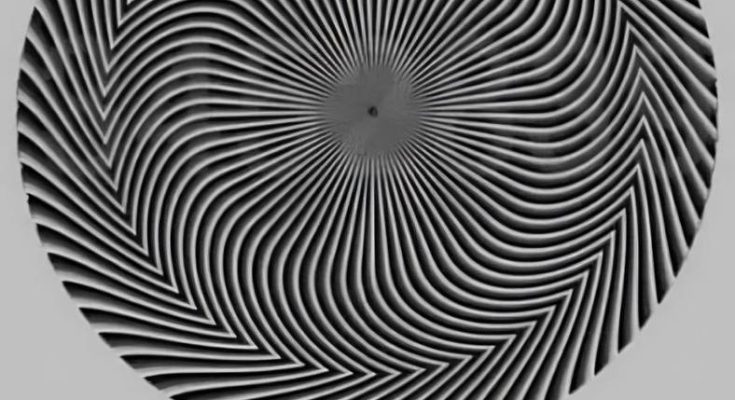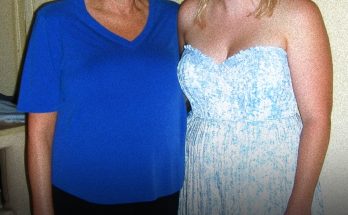Have you ever come across an optical illusion so puzzling that it left you questioning your own eyes? Well, a recent image has caused quite a stir across social media, leaving viewers divided over what number they can see hidden in a swirling black-and-white pattern. This optical illusion has sparked heated debates, with some people spotting a complete sequence of digits while others can barely discern a single number. So, what’s really hidden in the image, and can technology help settle the confusion? Let’s dive in and explore this mind-boggling optical illusion.

The Optical Illusion That Divided the Internet
Recently, social media exploded with discussions surrounding a viral optical illusion shared by a user named @benonwine on the platform X. The illusion featured a hypnotic swirl pattern that, at first glance, appeared to be nothing more than a confusing spiral of black-and-white lines. However, upon closer inspection, some viewers began to claim they could see hidden numbers embedded within the design.
Interestingly, the sequence of numbers isn’t immediately obvious to everyone. Some viewers are able to spot the full number sequence, while others only manage to pick out a few digits—or sometimes none at all. This has left many scratching their heads, trying to figure out which numbers are actually hidden in the optical illusion.
What Numbers Can You See in the Illusion?
The debate about which numbers are visible in the illusion has been a topic of heated discussion. Some viewers swear they can see the full sequence of numbers: 3452839. Others report seeing different variations, such as 1528 or 45283. The differences in what people can see have sparked curiosity, with many flocking to the comments section to share their findings.
For example, one commenter explained, “I saw 15283, while my husband saw 45283.” Another user chimed in with, “I can see 3452839, but the edges of the spiral make the numbers harder to spot than the center of the spiral, which we tend to overlook because we think we’ve already seen all the visible digits.” Yet another comment read, “I can see 45283, but I think there might be something before the 4 and after the 3.”
This disparity in what viewers are seeing has left many wondering what’s truly hidden in the image. Could the numbers be different depending on one’s perspective or eyesight? Or is there another factor at play?
The Role of Contrast Sensitivity in Optical Illusions
One explanation for the varying interpretations of the image lies in the concept of contrast sensitivity. Essentially, contrast sensitivity refers to how well a person can distinguish objects from their background, especially in low-contrast environments or low-light conditions. This ability plays a crucial role in how clearly a person can see certain details in an image.
In the case of this optical illusion, the black-and-white swirl pattern may not provide enough contrast for some people to easily identify the hidden digits. Individuals with higher contrast sensitivity may find it easier to spot the numbers, while others may struggle to discern them. The design of the image itself—specifically the swirling lines and patterns—also contributes to the challenge, as it makes the numbers harder to distinguish.

Some users used tools like Google Lens to help identify the hidden numbers, with varying results. Image Credits: Getty
Can Technology Help Solve the Illusion?
With so many conflicting answers about the hidden number, some users decided to turn to technology for assistance. One individual used Google Lens, a popular visual search tool, to analyze the image and identify the numbers. After processing the image, Google Lens revealed the sequence 3452839, which matched the number sequence some viewers had claimed to see. However, the person also noted that the number 3 was particularly hard to spot, likely due to its placement in the spiral’s outer edges.
The use of technology to analyze optical illusions is not new, and it can be incredibly helpful for settling debates like this one. Google Lens, in particular, uses advanced algorithms to recognize and identify patterns in images, making it a valuable tool for solving complex visual puzzles. But even with the aid of technology, some viewers still find it challenging to see all the numbers clearly.
Tips to Spot the Hidden Numbers More Easily
For those who are struggling to spot all the numbers in this baffling optical illusion, there are a few tips and tricks that may help. One common suggestion is to adjust the distance between your eyes and the image. Stepping back or moving closer to the illusion can change your perspective and make the hidden digits more visible.
Another tip is to adjust the lighting conditions. Viewing the image in a well-lit environment can make it easier to spot the numbers. Conversely, reducing the brightness or contrast of the image may also help some people see the digits more clearly, as it can enhance the subtle differences between the black-and-white swirls and the hidden numbers.
Why Optical Illusions Are So Fascinating
Optical illusions have always fascinated people because they challenge our perception of reality. They show us how our brains process visual information and how our minds can be tricked by patterns, colors, and shapes. In some cases, optical illusions reveal that our eyes and brains are not always in sync, and what we see might not always be what’s truly there.

In the case of the swirling number illusion, the fact that viewers are seeing different results is a testament to how unique each person’s visual system is. Some people’s brains may process the image in such a way that they can identify all the numbers clearly, while others may focus on different parts of the image and miss crucial details.
Conclusion: What Do You See in the Illusion?
At the end of the day, this optical illusion is a perfect example of how perception can vary from person to person. Whether you see the full sequence of 3452839, a shorter variation like 1528, or perhaps something entirely different, it’s a reminder of how our minds work in mysterious ways. As viewers continue to share their experiences and opinions on social media, the debate over the hidden numbers is likely to continue.
So, which number do you see? If you’re still unsure, why not try the tips and tricks mentioned earlier to see if you can spot the hidden digits? Regardless of what you see, one thing is for certain: optical illusions like this one will always keep us guessing.



